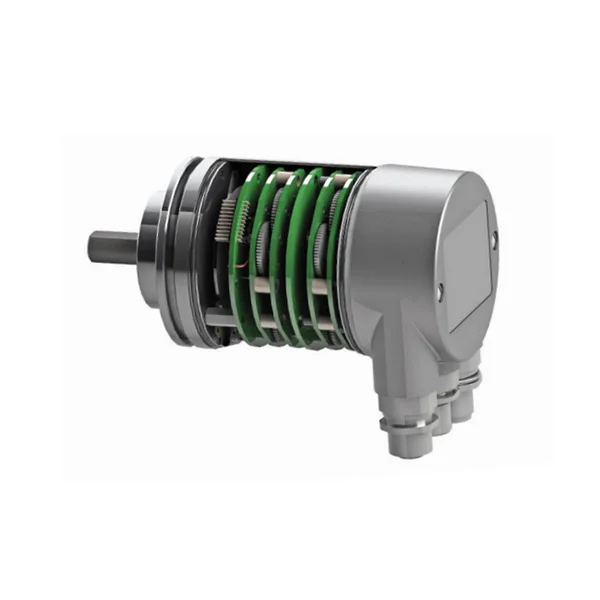- This topic is empty.
-
AuthorPosts
-
2025-10-13 at 1:49 pm #10853
The evolution of industrial automation and robotics has created a demand for highly accurate and reliable motion feedback systems. Among these, the precision magnetic absolute rotary encoder stands out as a critical component for ensuring positional accuracy, durability, and operational efficiency. Unlike incremental encoders, absolute encoders provide a unique position value, eliminating the need for reference moves after power cycles. This article explores the technology, benefits, and applications of precision magnetic absolute rotary encoders, offering insights into their pivotal role in modern automation. In this blog post, ENX Enxiao, a high quality durable encoder manufacturing factory, will share the features of precision magnetic absolute rotary encoder, its advantages, etc.
Understanding Precision Magnetic Absolute Rotary Encoder Technology
A precision magnetic absolute rotary encoder operates based on magnetic field sensing principles. It typically consists of a magnetic rotor and a stationary sensor array that reads the magnetic field orientation to determine the angular position. The core advantage of magnetic sensing lies in its robustness against environmental factors such as dust, oil, and vibrations, which often affect optical encoders. Moreover, the absolute nature of the encoder ensures that each angular position corresponds to a unique digital code, providing immediate and reliable position information after startup.
Key Features of Magnetic Absolute Rotary Encoders
Precision magnetic absolute rotary encoders are designed with several features that enhance their performance in demanding industrial environments:
-
High Accuracy: Modern encoders offer resolutions up to 23 bits, allowing for sub-arcminute precision in angular measurement.
-
Durability and Longevity: Magnetic encoders are contactless, reducing mechanical wear and extending service life.
-
Robust Environmental Tolerance: They maintain accuracy in the presence of dust, moisture, and temperature variations.
-
Power Loss Resilience: Absolute encoding ensures no position information is lost during power outages.
These features make magnetic absolute encoders highly suitable for applications requiring precise motion control and continuous operation in harsh environments.

Advantages Over Optical and Incremental Encoders
Compared with traditional optical encoders, magnetic absolute rotary encoders offer enhanced resilience and lower maintenance requirements. Optical encoders rely on light detection and slotted disks, which can be obstructed by contaminants, reducing reliability. Incremental encoders, while simpler, only provide relative position data, necessitating homing procedures after power interruptions. In contrast, magnetic absolute encoders provide instantaneous absolute position feedback, combining high precision with operational convenience.
Integration and Interface Options
Modern precision magnetic absolute rotary encoders support multiple digital communication interfaces, facilitating seamless integration into various control systems:
-
SSI (Synchronous Serial Interface): Offers high-speed position transmission with minimal noise interference.
-
BiSS-C Protocol: Open-source protocol providing fast and accurate absolute data communication.
-
CANopen and Modbus: Industrial standard interfaces suitable for networked automation environments.
These interface options allow engineers to choose the optimal encoder configuration for real-time motion control, robotics, and CNC machinery.
Applications in Industrial Automation
The versatility of precision magnetic absolute rotary encoders extends across multiple industries:
-
Robotics: High-resolution position feedback ensures accurate arm movement and end-effector positioning.
-
CNC Machines: Encoders maintain precise spindle or table positioning, critical for machining tolerance.
-
Renewable Energy: Wind turbines rely on absolute encoders for rotor angle measurement to optimize energy capture.
-
Medical Devices: Motion precision in imaging equipment or surgical robots benefits from reliable absolute position feedback.
In all these applications, the combination of high accuracy, robustness, and real-time absolute data transmission is indispensable for performance and safety.
Factors to Consider When Selecting a Magnetic Absolute Encoder
When choosing a precision magnetic absolute rotary encoder, several key factors must be evaluated:
-
Resolution Requirements: Higher resolution ensures finer control but may increase cost.
-
Environmental Conditions: Encoders must be selected based on dust, moisture, and temperature tolerances.
-
Interface Compatibility: Ensure the communication protocol matches the existing control system.
-
Mechanical Mounting: Shaft or hollow bore options, along with coupling compatibility, affect integration.
Proper selection guarantees maximum encoder performance, reliability, and return on investment.
Future Trends in Magnetic Absolute Encoder Technology
Advances in precision magnetic absolute rotary encoders are focusing on miniaturization, increased resolution, and smart functionalities. Next-generation encoders are being designed with integrated diagnostic tools, predictive maintenance capabilities, and enhanced digital communication protocols. These innovations aim to reduce downtime, improve efficiency, and support the growth of Industry 4.0 solutions where intelligent sensors play a pivotal role.
Conclusion
In conclusion, precision magnetic absolute rotary encoders are indispensable in modern motion control systems. Their combination of high accuracy, absolute position feedback, and environmental robustness makes them superior to conventional incremental and optical encoders in many industrial applications. By selecting the right encoder and leveraging its advanced features, manufacturers can achieve improved operational efficiency, reduced maintenance, and enhanced precision across automation systems.
http://www.enxsensors.com
ENX Enxiao -
-
AuthorPosts
- You must be logged in to reply to this topic.